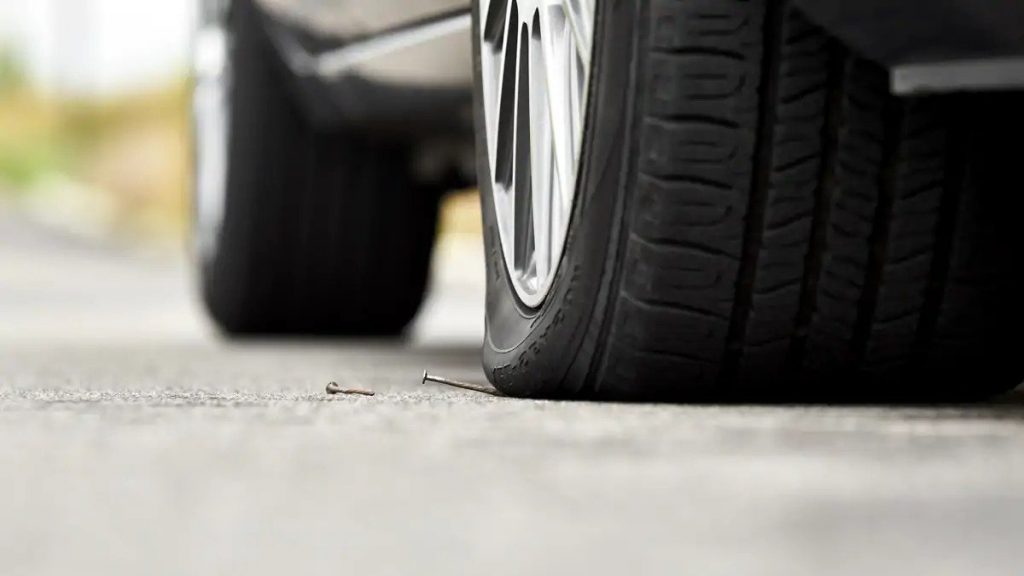For clarity, a tyre puncture is a small hole in a car tyre that has been made by a sharp object. If a car tyre punctures or if something punctures it, a hole is made in the tyre and as you might have guessed, this could result in a blowout, the loss of vehicle control and a very serious accident.
To avoid this, you should be able to spot a tyre puncture but that’s not all. You should also know what to do when and if you spot one on your car tyre(s).
By default, Air will naturally seep out of your car tyres over a period of time. This air will escape from your tyre through the rubber sidewall. Under ideal situations, your tyres should be losing between 1-3psi a month.
However, if your car tyres are losing air more rapidly than this, then there is cause for concern and there is a possibility that there may be a more serious underlying problem.
If you suspect that one or more of your tyre is leaking air, there are a number of simple steps you need to follow to check for a tyre puncture.
Remove Tyres For a Visual Check
This isn’t something you should carry out in a rush. You should dedicate sufficient time to take out the tyres and visually inspect them one after the other. Sometimes, you can spot a tyre puncture this way but in some cases, you might have to go beyond merely trying to spot a leak just by looking at the tyre.
Look Out For Obvious Signs of Damage
In this case, what you want to do is to look for the obvious signs of damage to your tyre. Such signs include cuts, slashes or bulges or an embedded screw or nail.
Check the Tyres Valve Stem
When checking the tyre’s valve stem for any cracks or surface damage, you should pay particular attention to the areas near the base. The valve stem of your tyre can deteriorate over a period of time and this can result in unnecessary air loss.
Inspect the Wheel
Always remember that your car tyre is not designed to last for a lifetime. If you suspect a tyre puncture, you should inspect the wheel carefully. Your car wheels are very likely to mishappen (having an ugly or deformed shape) due to factors like age or the roads it frequently plies.
Other factors include corrosion or a massive impact with a pothole or a kerb. Don’t take any of these for granted. The moment a wheel is bent or damaged, it will not hold the tyre flush to its surface and as a result, you might find air escaping from the bead area. By default, this will cause the tyre to gradually deflate.
What If You Do Not Spot Any Obvious Puncture or Damage?
In a situation where you cannot spot any obvious puncture after inspecting the tyre, then there is a possibility that the air loss is caused by a pinhole in the tread or sidewall.
To find out where the tyre puncture is, you’ll need to get some water and soap (preferably detergent). You can either mix the soap and water in a spray bottle or in a bowl big enough for the tyre to be dipped into.
If you are using the spray bottle, spray every inch of the tyre – tread, sidewalls, valve stem and rims. If you are using a large bowl or container, you should ensure that you have enough water in the bowl such that the tyre can be immersed in water.
Regardless of the option you settle for, the punctured area will reveal itself after some time as bubbles will begin to form around the site of the leak.
Final Thoughts on Tyre Puncture
In a lot of cases, a small tyre puncture or pinhole in the tread can be plugged or patched. You can either do it yourself or visit a roadside vulcanizer to get this done. However, anything more serious, such as a huge puncture or damage to the shoulders or sidewalls of the tyre, then you will need to replace the tyre rather than seeking any type of quick fix.
